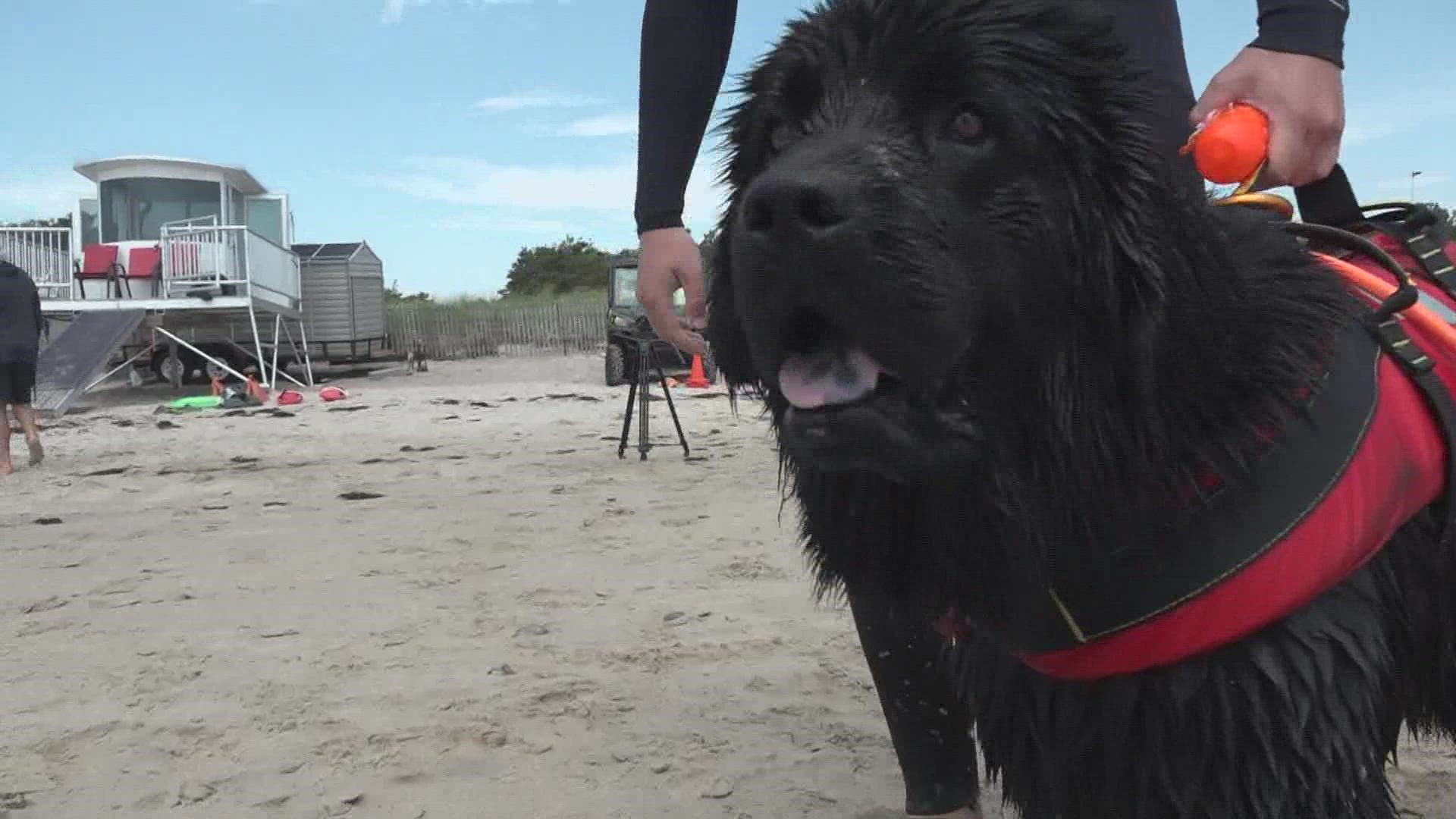SCARBOROUGH, Maine — If you're at Scarborough Beach State Park this summer, there's a chance you'll see a 14-month-old Newfoundland running around with the lifeguards. That's because she is a lifeguard herself.
Beacon has been training to be a lifeguard since she was just 12 weeks old.
Greg Wilfert is the manager at Scarborough Beach State Park. He says dogs are often used for water rescues in Europe.
"I just thought it was another tool to use," Wilfert said.
Beacon has been training both with her fellow human lifeguards and with the American Academy of Canine Water Rescue in Massachusetts.
"Staff works, you know, is very excited about working with her and putting the time in," Wilfert said.
"Beacon is one of the best-behaved dogs I've ever met. She is an absolute angel and we love her," one of the lifeguards said.
So, you're probably wondering, how does a dog save someone who is drowning?
"The idea, from my standpoint, is she is going to be a second responder with a lifeguard, not a first responder," Wilfert said.
Here's how it works.
When someone is in distress, a single lifeguard will respond, followed by a second lifeguard and Beacon, who'll be towing either a tube or a rescue can. The lifeguards will place the victim on the flotation device, then Beacon will take the group back to the shore.
"She'd pull three people in easy, four people in easy, all the way to the beach," Wilfert said.
Wilfert added Newfoundlands swim differently than other dogs.
"That's why they can tow more people in. They can tow a boat — they're very strong swimmers," he said.
Beacon is a hit with beachgoers, and she loves being there every day.
"She's done a tremendous job," Wilfert said.
Wilfert said he hopes to continue her training and have her ready for her first water rescue by the end of the summer.

